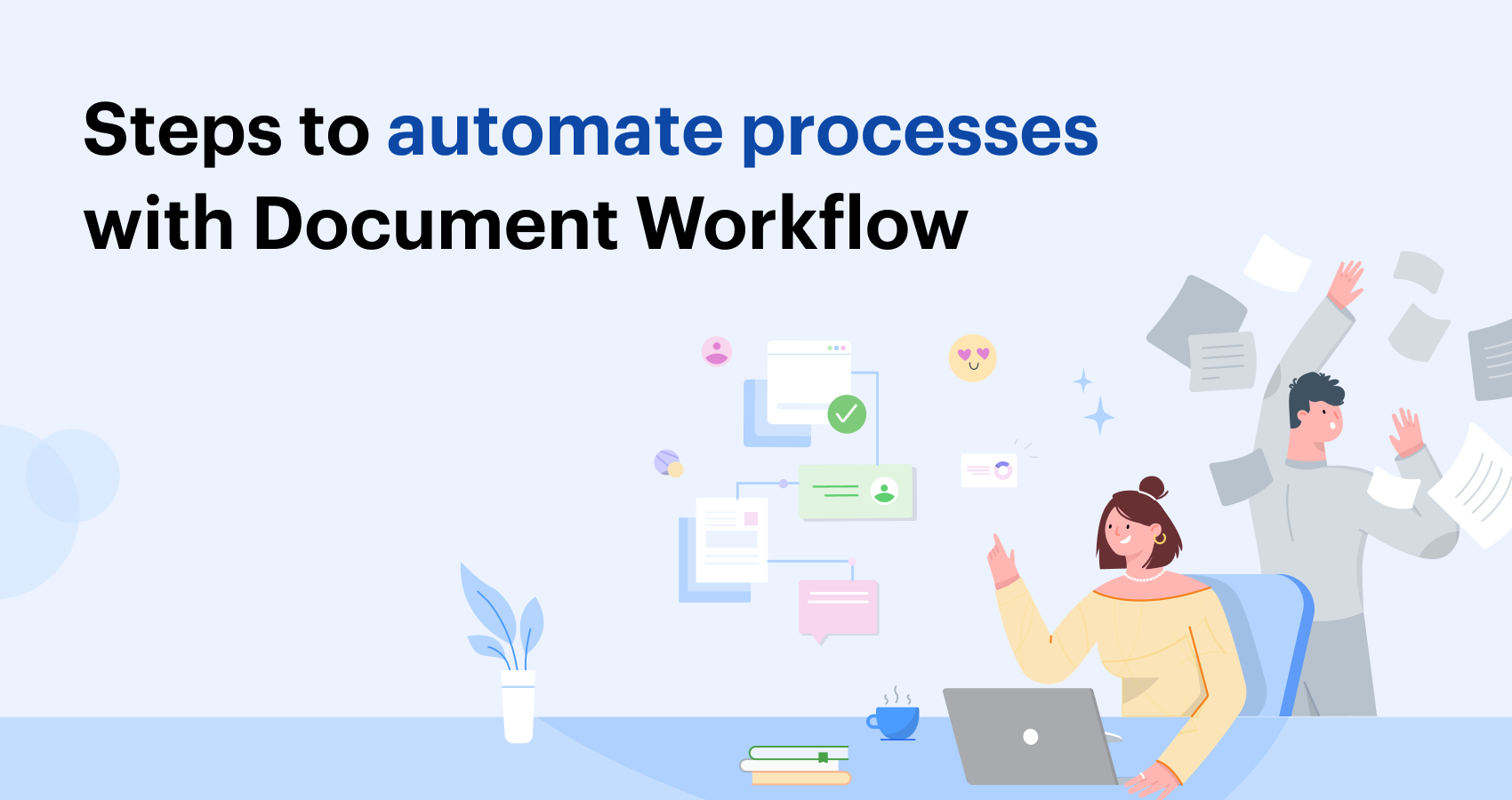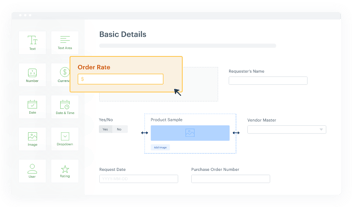Today, organizations deal with vast amounts of data and documents. And if you want your organization to be truly efficient, manually is not the way to go. This is exactly where document workflow can help. Right from intake to edits and storage, a well-executed workflow management solution can streamline and automate processes in your organization, all the while optimizing efficiency and productivity.
Let's take a look at how you can automate processes with document workflow.
What is a document workflow?
A document workflow can be defined as the system of managing documents in an organization. It is the process of storing, sharing, editing, deleting, and categorizing documents seamlessly. The aim is to set up clear guidelines for the organization about how to complete a given task in the document management lifecycle.
With a good document workflow, your employees get better access and control over all the documents that they need to work at peak productivity.

Document workflow includes all kinds of operational activities and procedures.
A typical document workflow entails:
-
Creating documents
-
Modifying documents and versioning them
-
Sharing and collaboration on documents
-
Setting up protocols for searching and categorizing documents
-
Deciding on conditions for document requests and approvals
-
Managing document tracking and reporting
Enhance Transparency
When employees have clear access to all the right information, they understand the organization’s internal processes better, which leads to increased transparency. The lack of a document workflow may cause duplication of work and redundancies.
Decrease Costs
Manual document processes aren’t just challenging, but they are also expensive to maintain and operate. The more manual processes you have, the higher number of personnel you will need to handle them, which can lead to more mistakes and higher labor costs. But automating processes with document workflow saves up on operating costs, filing costs, and storage costs.
Improve Productivity
When you replace repetitive and manual document-centric processes and replace them with streamlined and automated document workflows, it directly leads to improved productivity in the organization. After all, when employees don’t have to manage manual processes on their own, they are able to focus more on their core responsibilities and get more work done in less time.
Increase Stability
A document workflow helps bring more clarity for everyone involved and provides guidelines for how every document should be managed. This reduces overall organization chaos as everyone knows what needs to be done.
Eliminate Bottlenecks
With all of your processes transformed into streamlined workflows, it becomes easier to identify bottlenecks and solve business problems before they cause any permanent damage.
Elements of a Document Workflow
Every document workflow needs to have three essential elements in it:
Tasks
These are tasks that define events at every stage of the document workflow, from start to finish. The flow of these tasks can different–branched, linear, or mixed
Stakeholders
This includes all the people in your organization who are involved in the particular document workflow you are building. Essentially, it includes everyone who accesses it
Conditions and Rules
These include checks that need approval or conditions that need to be fulfilled by the request before forward in the workflow
Select a team to address the document workflow
Before any planning, you need to decide on the members in your organization who will be participating in the document workflow. Mapping this out in advance can help make workflows more efficient and straightforward.
The best way to move forward with this would be to review the people who were previously handling the same business process. You should also assess if you will need the same number of people managing the workflow as parts of the process will now get automated.
Make sure you set tasks, roles, responsibilities, and deadlines for every step and every person involved.
Decide on a workflow platform
Next, you need to decide on a workflow platform that can help automate processes in your organization.
Ideally, the platform should have the following features
-
An easy-to-use interface that anyone can use
-
Drag and drop visual editor to create, design, and manage document workflows
-
Automation to reduce manual workload
-
Streamlined team management and process management to collaborate and communicate with other team members
-
Third-party integration so it can work seamlessly with your existing technology stack
Setup a digital form for creating new processes
Create a digital form with all the fields and necessary details needed for the business process. Decide on the primary and secondary fields including assigned date, assignee, due date, and attachments. Though you should make sure to not overload the digital form with too much extra data, as that can confuse people.
Design the process map for the workflow
A process map is just like a flowchart that depicts every step involved in the workflow and how each step is connected to the others. The process map for a workflow essentially includes all the steps of the document approval process.
Set up conditions and permissions
To automate repetitive tasks in the workflow, set up conditions and rules for the same. You can also specify which fields should be read-only, hidden, or editable for which stakeholders. Then you can select approval conditions based on the values of specific fields.
For instance, if a document has been submitted for approval, the workflow should automatically send it to the manager responsible for reviewing and approving the document.
Deploy the workflow
Test the workflow to check for any errors and discrepancies, and when you are done – deploy it to take it live. Analyze the workflow regularly.
Just creating a document workflow is not enough, you need to monitor it to further fine-tune it constantly. Review the metrics and performance of the workflow over time to understand how it's been progressing and what can be done to improve it.
Establish effective workflows with Kissflow
Automate your document workflows and improve productivity with workflow software management solutions. With document workflow management, you can make collaboration easier, streamline business processes, and document approvals incredibly easy.
Kissflow’s workflow management platform allows teams to build their own custom workflows with zero coding. With features like a visual editor, automation, contextual collaboration, third-party integrations, and analytics, Kissflow unifies all your disparate processes into a single, streamlined platform.
Learn how Kissflow can streamline your business. Try it today.















